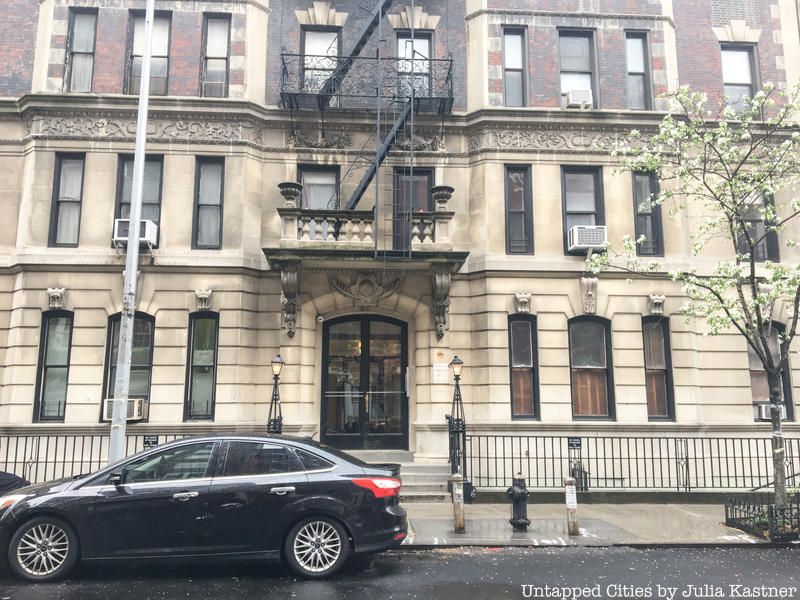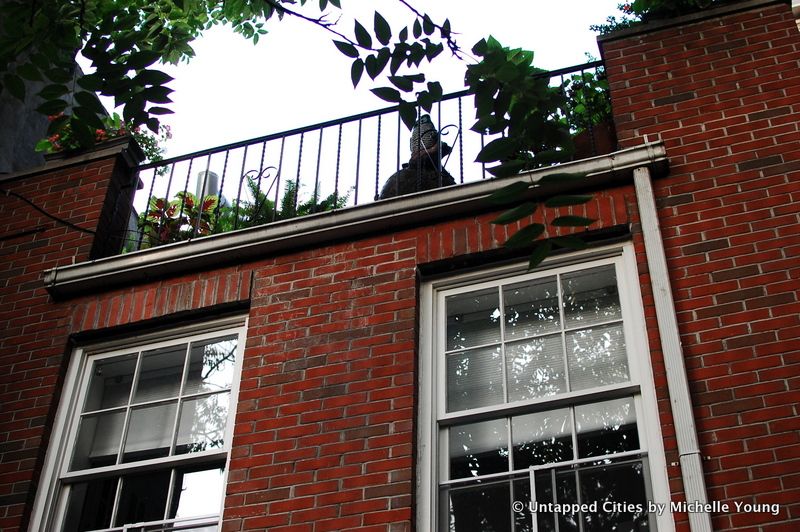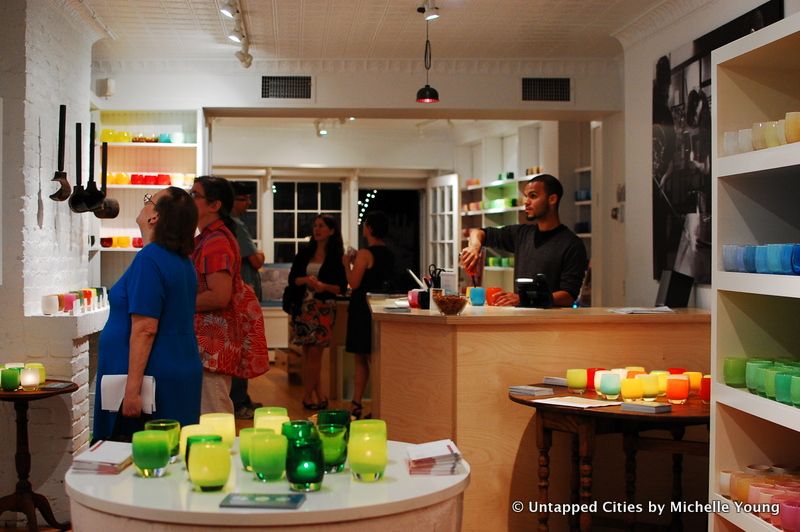Last Chance to Catch NYC's Holiday Notalgia Train
We met the voices of the NYC subway on our nostalgia ride this weekend!



Here at Untapped Cities, the legacy of Jane Jacobs impacts our daily life – what we write, how we see the streets, and what we hope our city will become, are influenced by her legacy. We were part of the small group that participated in the Rockefeller Foundation conference, Jane Jacobs Revisited at the Bellagio Center in Italy in 2012. We’ve written about the impact of Robert Moses, often pitted as Jacobs’ nemesis, and we’ve attended and hosted many Jane’s Walks as part of the citywide walking tour festival that takes place around her birthday every year. Today, we look at the apartments Jane Jacobs herself lived in while she was a resident of New York City
When Jane Jacobs first moved to New York City from eastern Pennsylvania, she lived in Brooklyn Heights on Orange Street (one of Brooklyn’s Fruit Streets) with her sister Betty. They shared the top apartment of a six-floor walkup. Jacobs’ sister worked in the home furnishings division of the department store Abraham & Straus, which was founded in Brooklyn. The store complex still exists, later turned into a Macy’s, which became a partner of A&S in the late 1800s.
Jane Jacobs herself talks about this apartment in a 2001 interview, published in the book Jane Jacobs: The Last Interview and Other Conversations. She notes that the walkup, located near the St. George Hotel, is not there anymore and that the neighborhood was nice and they lived there “before the highways went in there.” In fact, the house on Orange Street was destroyed in the Cadman Plaza renewal project, as reported in the book Becoming Jane Jacobs.

While living in Brooklyn Heights, Jacobs says she went job hunting each morning. She’d walk over the Brooklyn Bridge into Manhattan for interviews, get turned down, and “spend the rest of the day looking around where I had ended up.” Or, if she had already explored that area, she would “spend a nickel on the subway and go arbitrarily to some other stop and look around there.”
One day in 1935, a neighborhood really resonated with her. She got out at a stop she liked the name of – Christopher Street – and said she was “enchanted.” She recounts in the same 2001 interview:
I rushed back to Brooklyn. And I said, “Betty I found out where we have to live.” And she said, “Where is it?” And I said, “I don’t know, but you get in the subway and you get out at a place called Christopher Street.” So we went to look for a place where you got out of the subway at Christopher Street.
She says she and her sister found an apartment on “Martin Street” but we believe this was “Morton Street” and mistranscribed in the interview. In the Random House book Wrestling with Moses, Anthony Flint writes that the sisters lived on Morton Street where “their neighbors ranged from truckers and railway workers to artists, painters, and poets, including Jackson Pollock, Willem de Kooning, and e. e. cummings. The White Horse Tavern, which for decades had been a gathering place for the bohemians of Greenwich Village, stood just around the corner on Hudson Street.”
According to Becoming Jane Jacobs, the landlord at 55 Morton Street was Robert H. Hemphill, who wrote for the New-York Journal American. Hemphill also gave Jacobs one of her first writing jobs. Flint also notes that there was not much money left after paying rent and the sisters ate a mixture of Pablum “a nutritious but notably bland cereal for infants” and milk “or sustenance.” Jane worked as a secretary for a candy manufacturing company and submitted her writing as freelance in her off time, getting her first major commission from Vogue.

In 1944, Betty threw a party at the sisters’ new apartment at 82 Washington Place, between Sixth Avenue and MacDougal, less than a block from Washington Square Park. There, Jane met architect Robert Hyde Jacobs who would become her husband. She lived here until 1947.

Jane married Robert at her family home in Pennsylvania. While walking the streets of Greenwich Village, the couple came across 555 Hudson Street, then a “dilapidated building,” writes Flint who says that renovating the house became a “labor of love” for them. Above a candy store, 555 Hudson Street is where Jacobs wrote her seminal book The Death and Life of Great American Cities. Jacobs’ two children were also raised here.
As we noted in our 2010 article, the retail at 555 Hudson Street had become a store called Glassybaby (no longer open). From our research then, as early as 1922, the address was listed in the New York Times as a “three-story brick store and dwelling,” suggesting that it may have been built for mixed-use. The building appears to have been part of an estate and passed through a few hands until Jacobs and her husband bought the place in 1947 for $7000. In 1946, it was assessed at $8500 so the Jacobs got a great deal on it. In 2020, Village Preservation unveiled a plaque at the site that honors Jacobs’ residency.

In 1968, Jane Jacobs moved to Toronto partially in protest to the Vietnam War. 555 Hudson Street was sold in 2009 for $3.3 million. Also in 2009, the street was given the honorary name “Jane Jacobs Way,” in honor of her.
Next, read about 5 things we can blame on Robert Moses
Subscribe to our newsletter